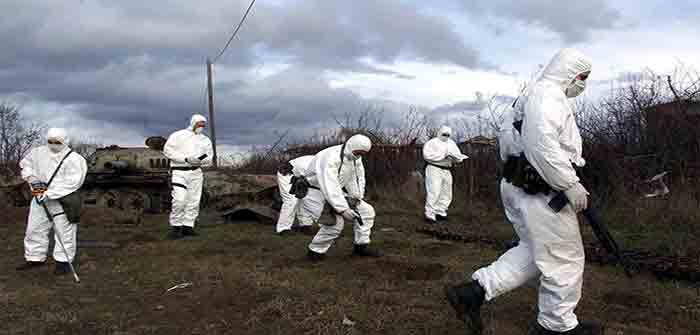
by Ilya Tsukanov at Sputnik News
The political fallout over the United Kingdom’s decision to send DU anti-tank shells to Kiev for use along with its Challenger 2 tanks continues to spread. On Saturday, President Putin said he didn’t buy Britain’s assurances that the munitions wouldn’t cause any health effects, and that taking into account the toxic radioactive dust generated by the shells, they “of course amount to a weapon of the most dangerous kind.”
Igor Kirillov, the head of Russia’s Radiation, Chemical and Biological Defense (RCBD) Troops, echoed the president’s concerns, predicting that the weapons’ use would “cause irreparable harm” to the health of soldiers and the civilian population alike, with DU compounds expected to remain in the soil and affect people, animals and the environment for many years to come.
Russia’s concerns are not unjustified. Throughout the past year, Russian intelligence and the RCBD Troops issued report after worrying report regarding Kiev’s ambitions to build nuclear weapons, scenarios involving false flags using radioactive dirty bombs, and a long list of evidence of dangerous US and European-funded and coordinated experiments with biological weapons at Ukraine-based biolabs.
But depleted uranium poses a special kind of danger, due both to its availability and record of use.
Discovered during the Cold War by US and British scientists as an effective but controversial armor-piercing weapon, DU tank and artillery shells and air-dropped bombs are stuffed with the uranium byproducts left over from the production of nuclear energy.
Military R&D engineers quickly discovered that the extraordinary level of heat generated by DU rounds when they hit their target and catch fire (measured in the thousands of degrees Celsius) allow them to literally ‘burn through’ armor like a hot knife through butter – entering tank crew compartments, killing everyone inside and often literally blowing turrets clean off…
